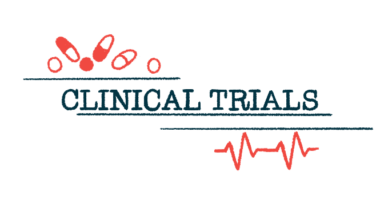Antibody brings proteins together to tame autoimmune hepatitis
Study uses mouse model of disease where immune system attacks liver

BiTS, an antibody co-developed by researchers at New York University (NYU) to tame overactive immune T-cells, reduced inflammation and liver damage in a study that used a mouse model of autoimmune hepatitis, a disease in which the body’s immune system mistakenly attacks the liver.
The antibody is designed to bring two proteins — the T-cell receptor, which can be turned on in autoimmune diseases, and LAG-3, a checkpoint that dials down overactive T-cells — into close proximity. This closeness increases how well LAG-3 reduces the activity of T-cells.
“Our findings reveal an intricate mechanism that enables a careful treatment approach to [T-cell]-driven autoimmune diseases, which currently lack effective immunotherapies,” Jun Wang, PhD, assistant professor at the NYU Grossman School of Medicine and co-leader of the study, said in a university press release.
The study, “Proximity between LAG-3 and the T cell receptor guides suppression of T cell activation and autoimmunity,” was published in the journal Cell.
Antibody developed to bind to specific proteins
Autoimmune hepatitis is a rare form of hepatitis in which overactive immune T-cells mistakenly attack healthy parts of the liver, causing inflammation and damage. As with most other autoimmune diseases, the exact cause of this autoimmune response is unclear, so treating it by targeting disease-causing T-cells has been difficult.
LAG-3, a protein that suppresses T-cell activation, binds to another protein called MHC class II. This binding alone does not fully allow LAG-3 to reduce the activity of T-cells. The key is how close LAG-3 is to the T-cell receptor, also known as TCR, a protein that activates T-cells.
To take advantage of this mechanism, the researchers developed a bispecific antibody, called BiTS, that binds to both LAG-3 and the T-cell receptor. This forces LAG-3 and the TCR to come into close proximity without needing MHC class II, which should allow for “potent suppression” of T-cells, the researchers wrote.
“We discovered that, as a [T-cell]’s surface draws close to the [MHC class II] presenting its TCR trigger molecule, the [T-cell] receptor gets particularly close to LAG-3,” said Jasper Du, a medical student in Wang’s lab and one of the authors of the study. “For the first time, we found that this proximity is central to the ability of LAG-3 to dial back [T-cell] activity.”
Researchers focus on pediatric liver disease
The team focused on a disease called pediatric acute liver failure (PALF), where the cause is unknown in many cases. Some of these patients have large numbers of memory-like CD8 T-cells — immune cells that “remember” past threats but can mistakenly attack the body’s own tissues.
Using data of liver samples from PALF patients, scientists found a higher expression of genes linked to inflammation and to the activation of T-cells, especially in patients without a known cause for their disease. This suggested an immune-based cause for the liver damage.
To test BiTS, the researchers turned to a mouse model where CD8 T-cells are activated to mimic inflammation in the liver, similar to what happens in PALF. Mice given BiTS showed less inflammation and damage in the liver. In contrast, mice given an inactive version of BiTS didn’t show improvements. Biomarkers of inflammation were found at lower levels in BiTS-treated mice.
These insights not only refine our understanding of LAG-3 biology but also foster [proximity-based] strategies for treating autoimmune diseases.
Using specific lab techniques such as flow cytometry to count immune cells and single-cell RNA sequencing to study gene activity in individual cells, the researchers found that BiTS reduced the numbers of CD8 T-cells and changed the activity of their genes — especially genes involved in inflammation, activation, and memory.
Similar findings were obtained in mouse models of autoimmune diabetes and multiple sclerosis.
“These insights not only refine our understanding of LAG-3 biology but also foster [proximity-based] strategies for treating autoimmune diseases,” the researchers wrote.








